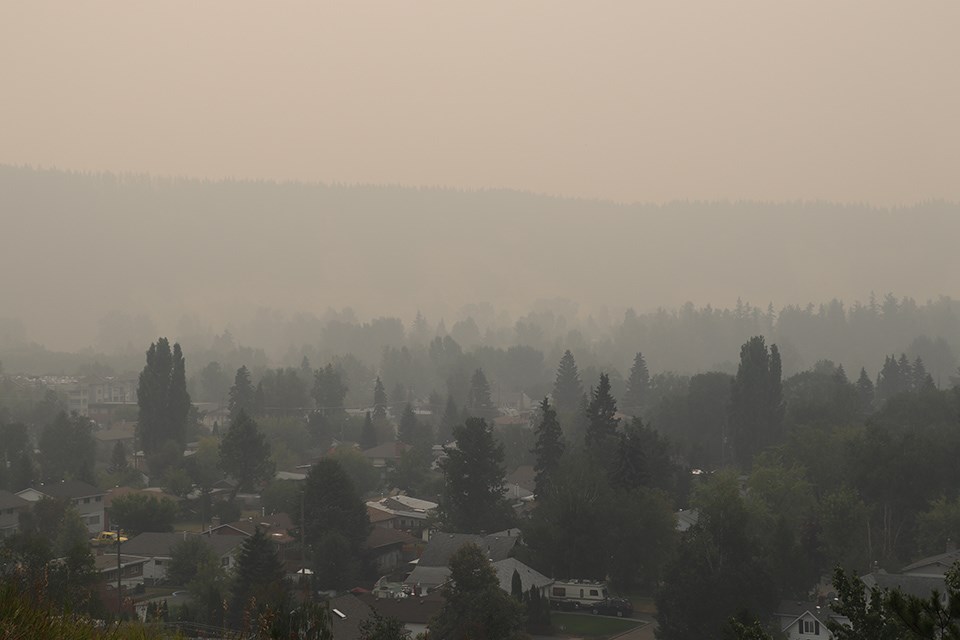New modelling shows one of the biggest contributors to air pollution in Prince George is wood smoke from residential heating sources and dust generated from roads and commercial sites.
The insights come from an updated Air Emissions Inventory and Modelling Report prepared by UNBC for the Prince George Air Improvement Roundtable (PGAIR).
The updated air emissions inventory is meant to better understand current sources of pollutants in the air shed and guide recommendations for improvements as PGAIR’s five-year strategic plan ends in 2021 and it’s in the early phases of planning its next outlook.
The last air emissions inventory was developed in 2010 using air shed data from 2005, thus more recent data is critical for developing new air management strategies.
The City of Prince George, Northern Health, the Ministry of Environment (MOE) and PGAIR worked with a research team at UNBC to produce the updated air emissions inventory to better understand priority pollutants in the airshed.
The update uses data from 2016 (to avoid the above-average wildfire smoke impacts from 2017 and 2018) and new weather and pollutant transport models to generate a new inventory for Prince George.
“Canada, in general, has excellent air quality, but some areas do have challenges,” explained UNBC’s Dr. Peter Jackson during a presentation to city council Monday night (Feb. 8). Jackson co-authored the report along with UNBC’s Brayden Nilson and Gail Roth with the Ministry of Environment and Climate Change Strategy
“Prince George like other B.C. interior towns can have elevated levels of fine particulate matter (PM2.5) and this is due to a combination of sources that exist in our air shed as well as our local geography, topography and the meteorology of our area.”
Prince George has had long-standing issues with air quality and over the years the city has had some of the highest concentrations of particulate matter in the province. Given the serious health implications associated with PM2.5, it is a priority pollutant in the Prince George air shed.
“It’s long been felt that due to changes in the emissions in the air shed since 2005 it would be a worthwhile endeavour to update the emission inventory to reflect current levels,” said Jackson, noting that investment from industry over the last 16 years has had an impact.
“A lot of the emission reductions have been made by industry from the period between now and 2005.”
However, Jackson noted the concentration of PM2.5 in the air is what is most important to analyze as it can be attributed to specific sources.
“What we care about from a health perspective is what we end up breathing and that is related to concentration.”
He said the modelling found that the primary sources of PM2.5 are wood smoke from residential heating sources and dust generated from roads and commercial sites.
While most neighbourhoods in the city are below the standard, a few sites exceed the annual air quality objectives; PM2.5 is highest in the Hart, the Bowl and the BCR Industrial Site.
Emissions from wood smoke were also found to be most significant in the winter months.
The updated air emissions inventory provides information the city can utilize in administering operations and the Clean Air Bylaw.
The city says the data may also be considered in future bylaw updates that address key air quality issues.





